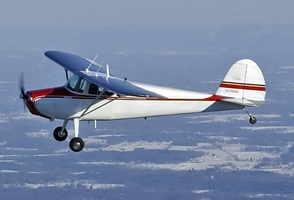What is the correct air pressure on the main tires?
Moderators: GAHorn, Karl Towle, Bruce Fenstermacher
-
juasiel123
- Posts: 50
- Joined: Sun Mar 25, 2007 3:21 pm
What is the correct air pressure on the main tires?
I know,, I know,, dumm question.
But still want to know what you think...
how much PSI is the correct pressure for the main's and how much PSI on the tail gear tire?
Just wanna have it right.
Any feedback will be appreciate.
Juasiel
But still want to know what you think...
how much PSI is the correct pressure for the main's and how much PSI on the tail gear tire?
Just wanna have it right.
Any feedback will be appreciate.
Juasiel
-
mrpibb
- Posts: 395
- Joined: Wed Apr 23, 2003 10:48 pm
My poh states 24 psi max, If I have no data I'll figure 1 psi per 100 pounds of the gross weight for a ballpark get em flying figure. This works for light planes only, different math for a B777.
Vic
N2609V
48 Ragwing
A Lanber 2097 12 gauge O/U Sporting
A happy go lucky Ruger Red label 20 ga
12N Aeroflex
Andover NJ
http://www.sandhillaviation.com

" Air is free untill you have to move it" BB.
N2609V
48 Ragwing
A Lanber 2097 12 gauge O/U Sporting
A happy go lucky Ruger Red label 20 ga
12N Aeroflex
Andover NJ
http://www.sandhillaviation.com

" Air is free untill you have to move it" BB.
- N2255D
- Posts: 489
- Joined: Wed Apr 24, 2002 3:42 am
Sure sounds like a lot of pressure for the tail. I've always put 24 mains/32 tail.CESSNA SERVICE LETTER SLN-56
DATE: 08-03-48
The amount of air in the tires also has a good deal of bearing on the rate of tire wear. Too much air in the tires results in no give in the tire with a resultant scuffing that greatly increases tire wear. The following list shows the correct tire pressures which will result in smoothest operation of the landing gear with maximum of tire life.
190-195 Main Wheels 32#
Tail Wheel 45#
170 Main Wheels 24#
140 Main Wheels 16#
Walt Weaver
Spencer Airport (NC35)
Spencer Airport (NC35)
- GAHorn
- Posts: 21295
- Joined: Fri Apr 12, 2002 8:45 pm
Per the Owners Manual: 24 psi -Mains, 34 psi tail.
Regarding other tire sizes, See:
http://www.cessna170.org/phpBB2/viewtopic.php?t=3181
Regarding other tire sizes, See:
http://www.cessna170.org/phpBB2/viewtopic.php?t=3181
'53 B-model N146YS SN:25713
50th Anniversary of Flight Model. Winner-Best Original 170B, 100th Anniversary of Flight Convention.
An originality nut (mostly) for the right reasons.
50th Anniversary of Flight Model. Winner-Best Original 170B, 100th Anniversary of Flight Convention.
An originality nut (mostly) for the right reasons.
- cessna170bdriver
- Posts: 4115
- Joined: Mon Apr 22, 2002 5:13 pm
- GAHorn
- Posts: 21295
- Joined: Fri Apr 12, 2002 8:45 pm
The pressure offered (of 34psi) is for the Scott 3200 tailwheel and tire. Scott also provides a graph which is depicted in the SRAM which offers various conditions for that tire/wheel versus weight to be carried....but that graph is applicable for industial useage of the that tailwheel....not necessarily specific to aircraft use. The 170 Owner's Manual specifies 34 psi for the Scott 3200.tripslip38 wrote:I couldn't find a spec for tailwheel tire pressure in my POH. Where did you guys find that?
It makes mention of a solid rubber tire for the tailwheel. Is that right or am I downwind of the meth lab?
'53 B-model N146YS SN:25713
50th Anniversary of Flight Model. Winner-Best Original 170B, 100th Anniversary of Flight Convention.
An originality nut (mostly) for the right reasons.
50th Anniversary of Flight Model. Winner-Best Original 170B, 100th Anniversary of Flight Convention.
An originality nut (mostly) for the right reasons.
- GAHorn
- Posts: 21295
- Joined: Fri Apr 12, 2002 8:45 pm
- n2582d
- Posts: 3013
- Joined: Mon Apr 29, 2002 4:58 am
Re: What is the correct air pressure on the main tires?
Here's a case from Pierce Aero for higher air pressure in your tailwheel:
You should carry sufficient air pressure in your tail wheel to keep the tire firmly attached to the rim when it hits the pavement on landing. Due to the small diameter of the tail wheel, it accelerates very rapidly on contact. If you have insufficient pressure in the tire it will slip on the rim and cut the valve stem. You now have a flat tail wheel tire. I know- it’s happened to me twice. I now carry a minimum of 45 pounds of pressure in my Scott tail wheel. The same thing can happen to your main tires but with more surface contact area around the rim it is less likely to happen unless your plane lands at very high speeds.
Gary
- blueldr
- Posts: 4442
- Joined: Thu May 02, 2002 3:16 am
Re: What is the correct air pressure on the main tires?
1SeventyZ,
The stock tail wheel for the C-170 was a smaller Scott tail wheel with a solid rubber tire the same as was used on the C-120 and C-140. The Scott 3200 was an optional item.
The stock tail wheel for the C-170 was a smaller Scott tail wheel with a solid rubber tire the same as was used on the C-120 and C-140. The Scott 3200 was an optional item.
BL
Cessna® is a registered trademark of Textron Aviation, Inc. The International Cessna® 170 Association is an independent owners/operators association dedicated to C170 aircraft and early O-300-powered C172s. We are not affiliated with Cessna® or Textron Aviation, Inc. in any way.

